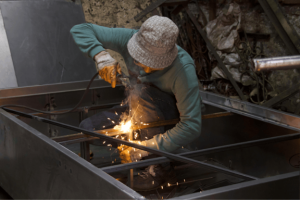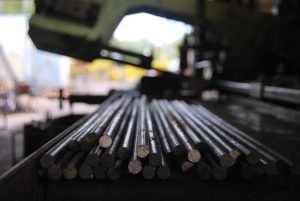Last Updated on July 22, 2025 by teamobn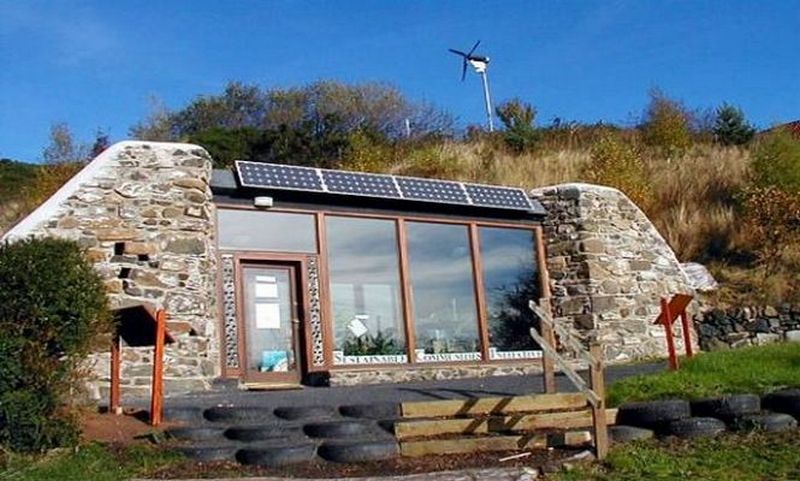
This home uses one of the world’s biggest waste problems as its basic building material. Can you guess what that is? The result is an incredibly strong, thermally stable home. BTW… it can also look fantastic as you can see here!
The answer is “tires”! Lots of them! This is a much better use than the 30+ million that goes into landfills every year in the USA alone! Just try to imagine what 30 million tires look like… and that’s a yearly challenge that can only intensify as more of the world becomes mobile.
What Are Earthship Homes? Nature’s Off-Grid Marvels
Earthship homes are radical dwellings that blend ecology and architecture. Pioneered by architect Michael Reynolds in the 1970s, they use recycled materials like old tires, bottles, and cans as core building blocks. Walls are built by packing tires with earth. Each home gives a second life to waste and cuts down on new materials.
Design relies on passive solar heating and cooling. A south-facing glass wall lets sunlight flood each room during the day. Thermal mass walls store heat in packed earth and release it at night. Rainwater is collected from the roof, filtered, and stored in cisterns. Greywater from sinks and showers irrigates indoor planters. Solar panels and wind turbines add clean power.
Living off-grid has never looked so good. Residents grow fresh produce year-round in sunlit garden beds. Each home blends indoor and outdoor space into one seamless ecosystem. Minimal reliance on utilities cuts bills and carbon output. Every earthship reflects its builder’s style and the local climate. These homes prove that sustainable living can feel luxurious and inspiring.
Earthships are strong, durable, and safe. They are also labour-intensive to build and conversely, low maintenance when completed. They are the ultimate DIY project if you have the time but are on a tight budget. And of course, a lot of friends and extended family can also make a big difference.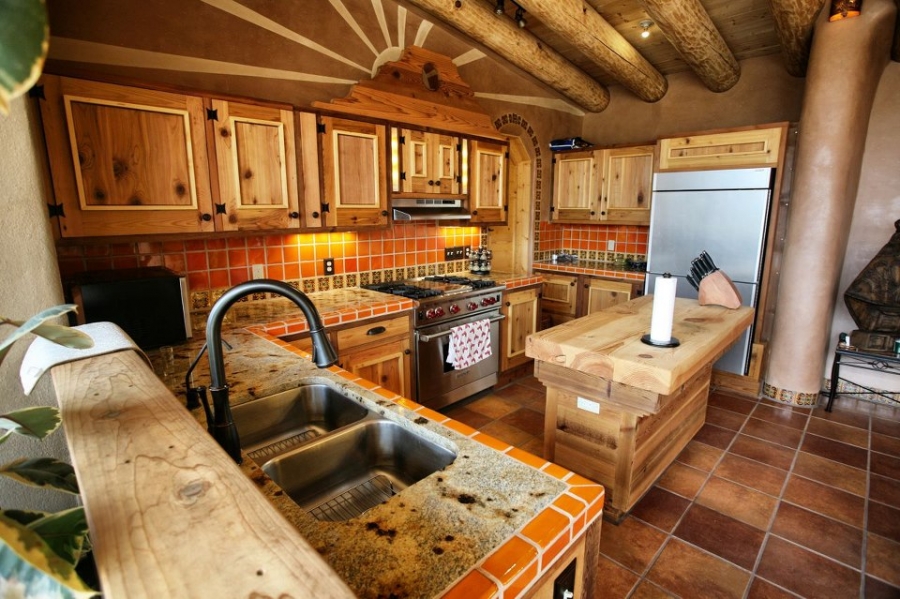
Earthship Home Advantages You’ll Feel Every Day
Earthship homes deliver more than visual novelty. Their green design slashes carbon output, trims budgets, and gives owners a fortress-like shelter that needs little upkeep.
Carbon-Friendly Living
Earthship homes shrink your carbon footprint because nearly every component comes from discarded or local materials. Builders ram earth into used tires for walls, set wine or soda bottles into interior partitions, and finish with on-site clay plasters.
The embodied energy of new bricks, steel, or concrete disappears. Passive solar orientation, earth-sheltering, and natural ventilation then cut heating, cooling, and lighting loads. You rely on sunshine and thermal mass, not fossil fuels.
Budget- and Eco-Friendly Construction
An Earthship home keeps budgets sane by turning trash into structure and décor. Glass bottles embedded in exterior walls create jewel-toned skylights at zero cost while relieving landfills. Tires are free from local shops glad to avoid disposal fees. Earth infill eliminates expensive lumber and insulation. You also save during operation. Passive climate control, harvested rainwater, and off-grid power erase monthly utility bills. The house pays you back with every season.
Sturdy, Safe and Low Maintenance
Earthship homes feel solid because each tire wall weighs tons and interlocks like giant bricks. This mass shrugs off tornado winds, fire, and even small earthquakes, giving your family a stronghold. Buried rear walls keep temperatures steady and protect against wild weather. After construction, upkeep stays simple. There’s no siding to paint, no shingles to replace, and minimal mechanical systems to service. Occasional plaster touch-ups and filter changes are the only regular chores.
Harnessing Passive Solar Heat in Earthship Homes
Earthship homes thrive on natural warmth and light. The passive solar techniques below keep interiors steady through blazing summers and icy winters while slashing energy use.
South-Facing Glazing
Broad, tilt-angle windows grab low winter sun and flood rooms with light. Overhangs sized to local latitude block high summer rays. Low-E glass traps radiant heat after sunset. You get bright spaces, free warmth, and reduced glare without a single watt of mechanical input.
Thermal Mass Walls and Floors
Rows of earth-packed tires and thick adobe floors act as giant batteries. They absorb heat during sunny hours, then release it slowly overnight. This steady trickle flattens temperature swings. You sleep in comfort, and delicate indoor plants avoid stress.
Smart Insulation and Air Sealing
Rigid foam, recycled denim batts, or straw bales line roof and end walls. A continuous vapor barrier stops drafts at joints and around skylights. Tight construction keeps captured heat indoors, letting the thermal mass do its job.
Natural Heat Circulation
Clerestory vents and floor grills create gentle convection loops. Warm air rises and pulls cooler air toward the masonry core for pickup. A small solar chimney can boost flow on still days. No fans needed.
Seasonal Shading Tactics
Deciduous vines climb trellises in front of the glass wall. Leaves block intense summer sun, yet bare branches let winter light in. Removable shade sails or roll-down linens add backup when heat waves linger. Earthship homes remain cool without blackout curtains or AC units.
What are the most amazing Earthship home design ideas?
Below are 30 images of the most amazing Earthship home design ideas.
Click on any image to start the lightbox display. Use your Esc key to close the lightbox. You can also view the images as a slideshow if you prefer 😎
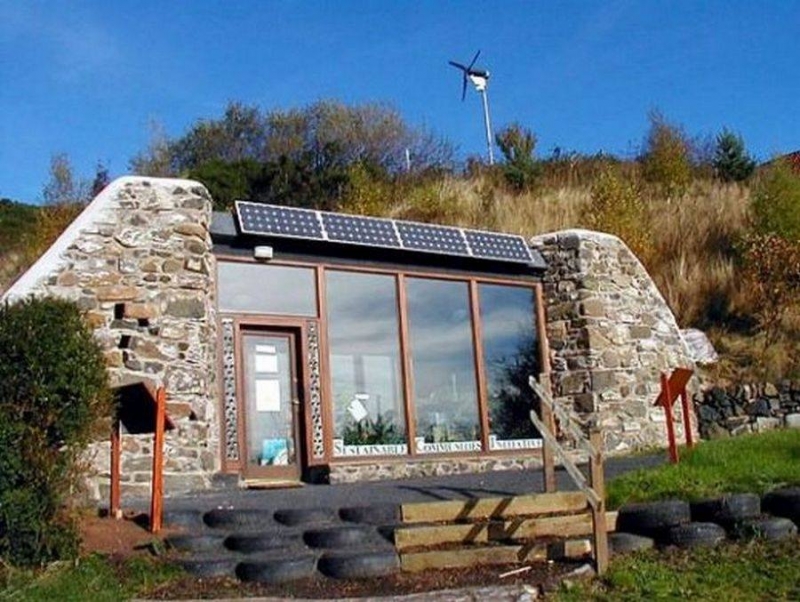
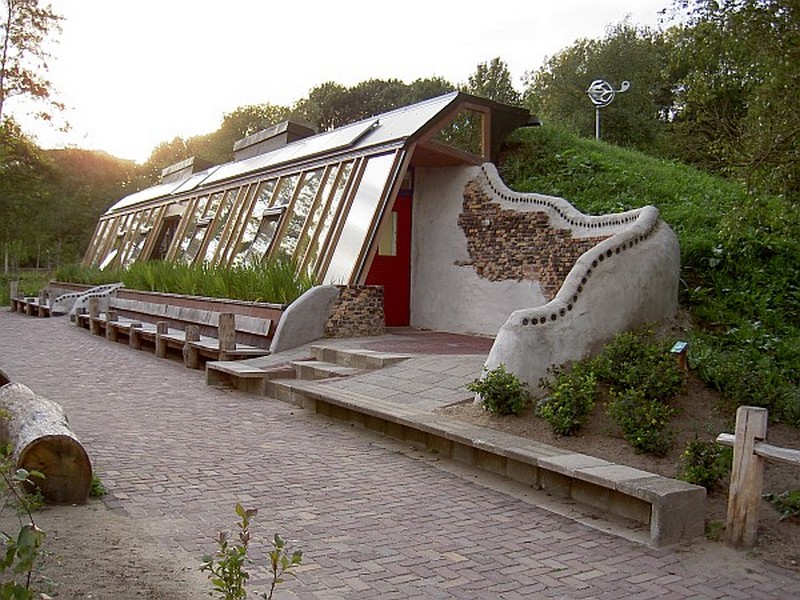
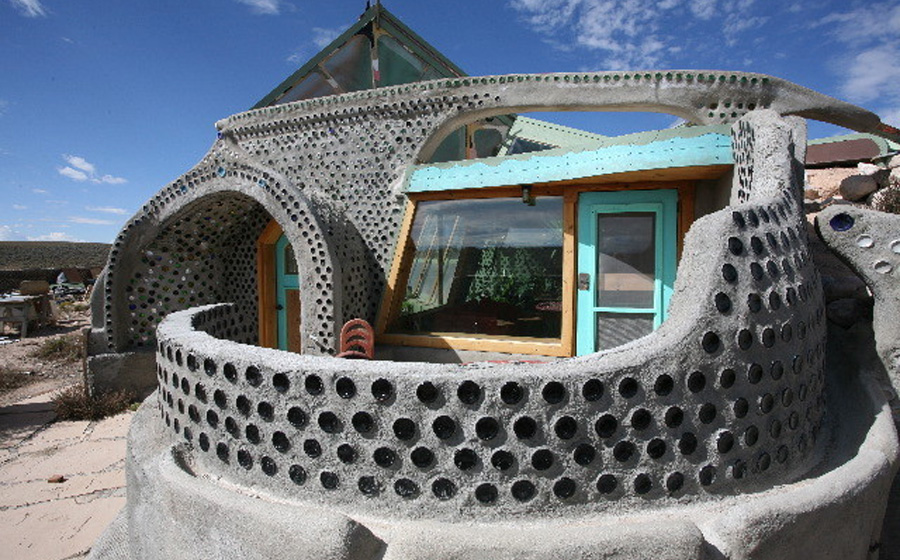
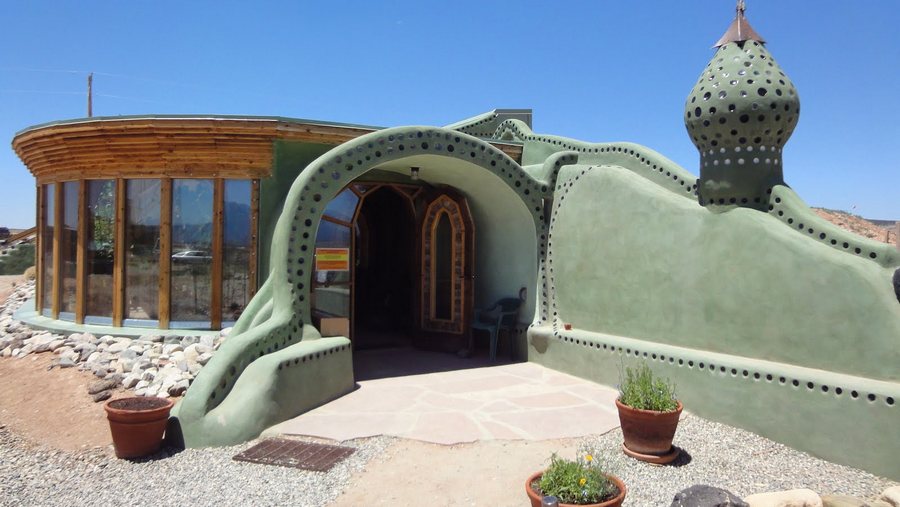
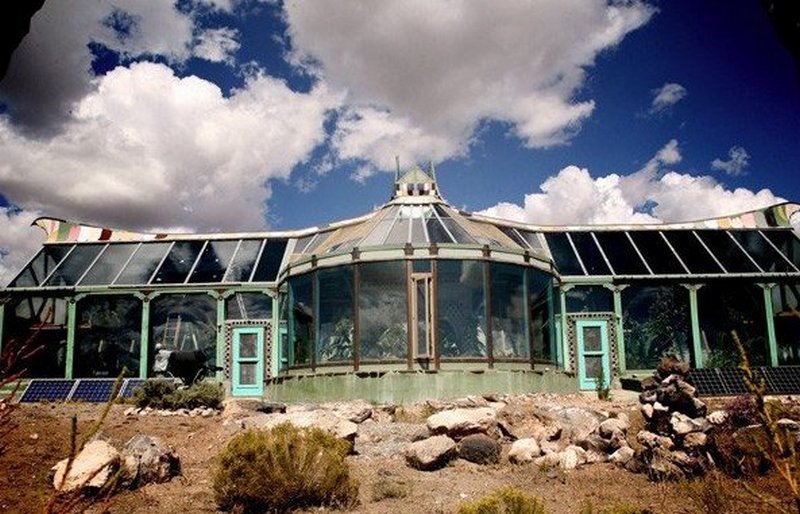
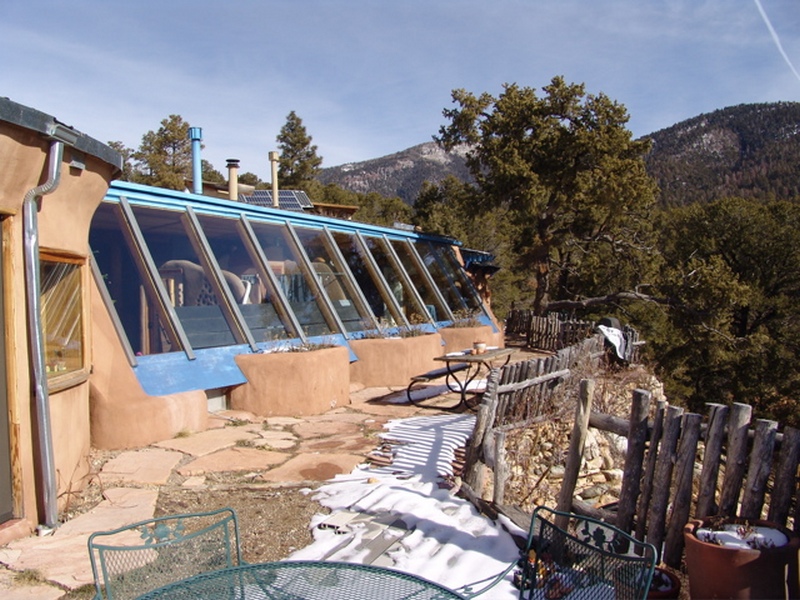

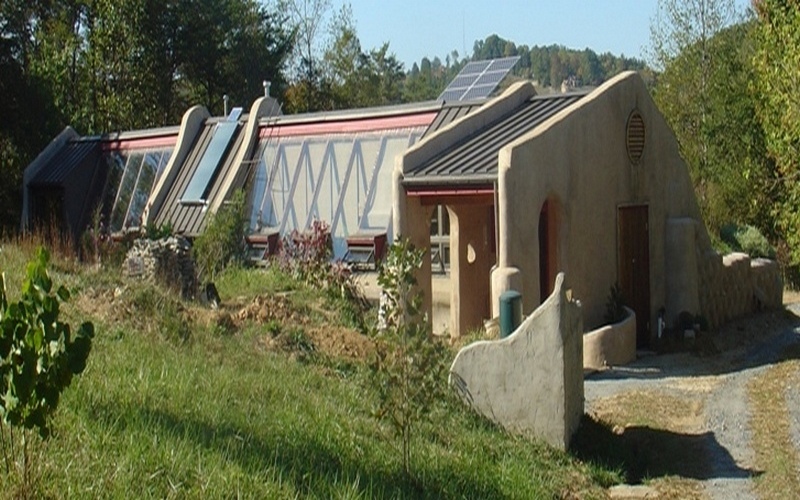
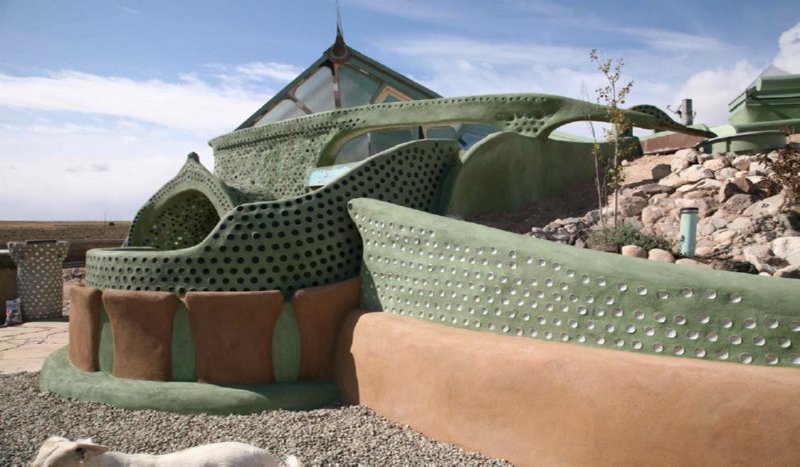
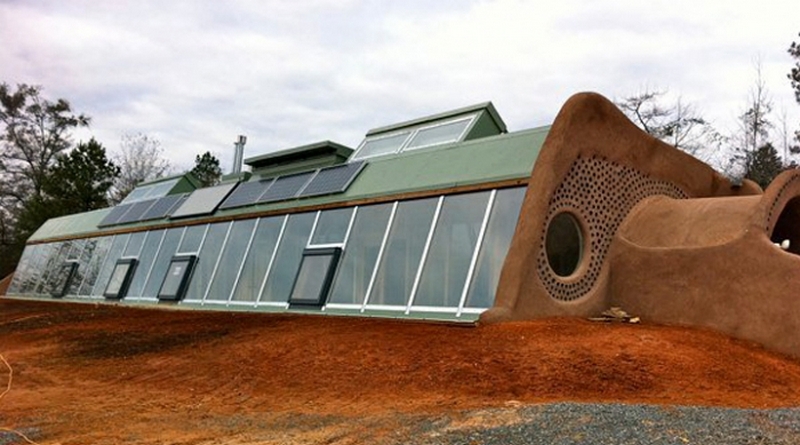


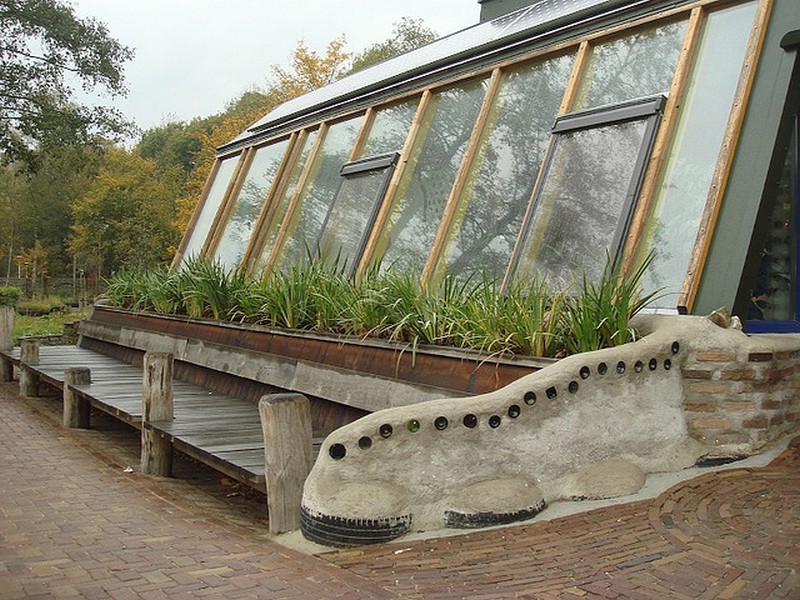
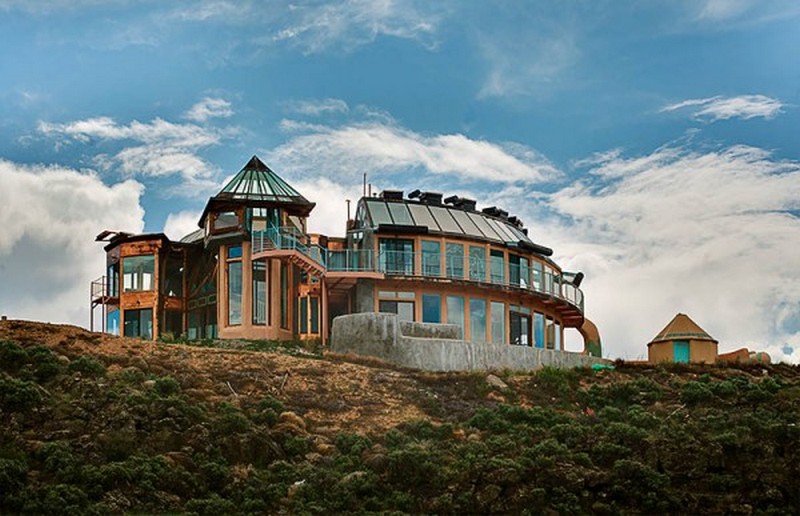
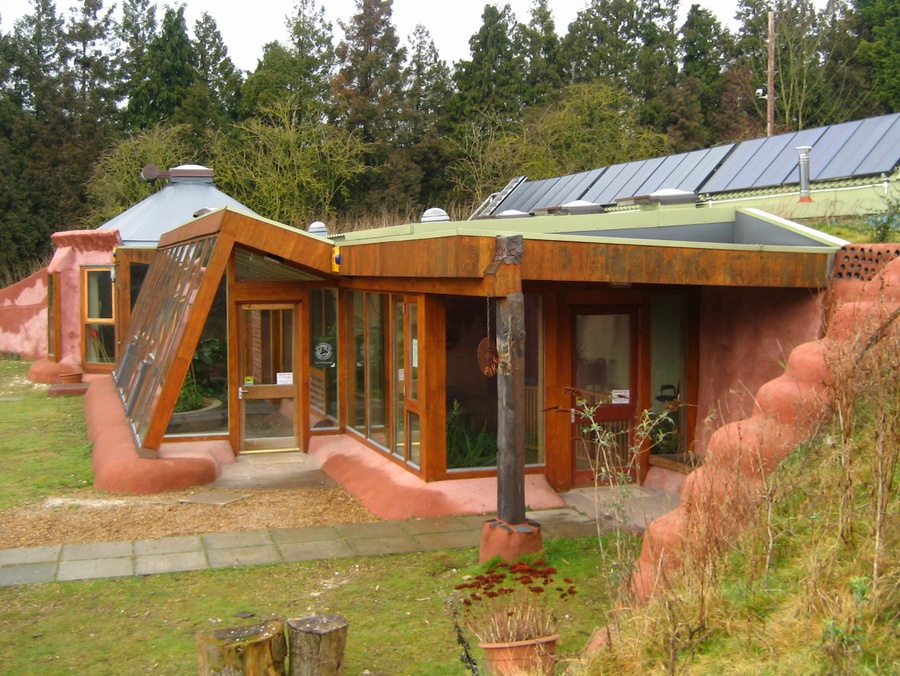
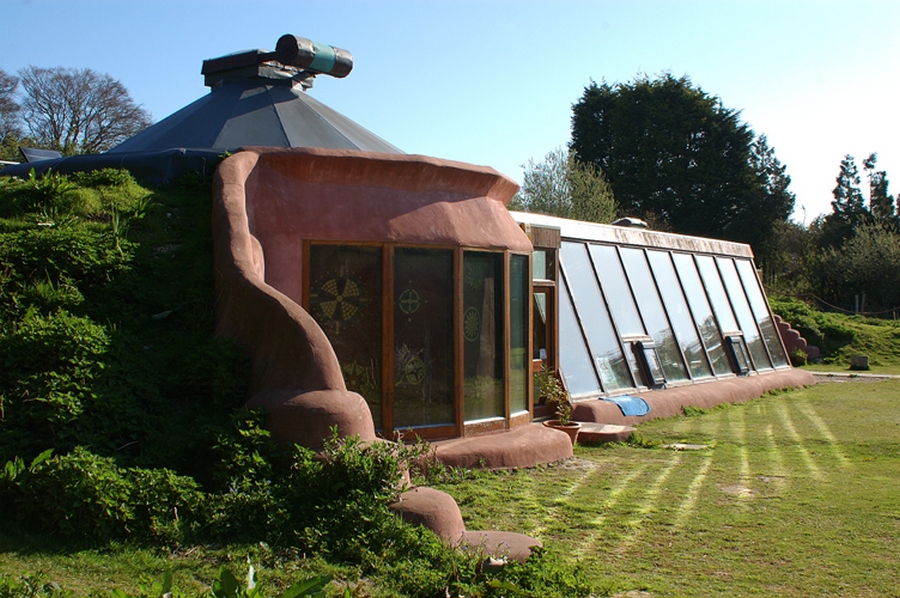
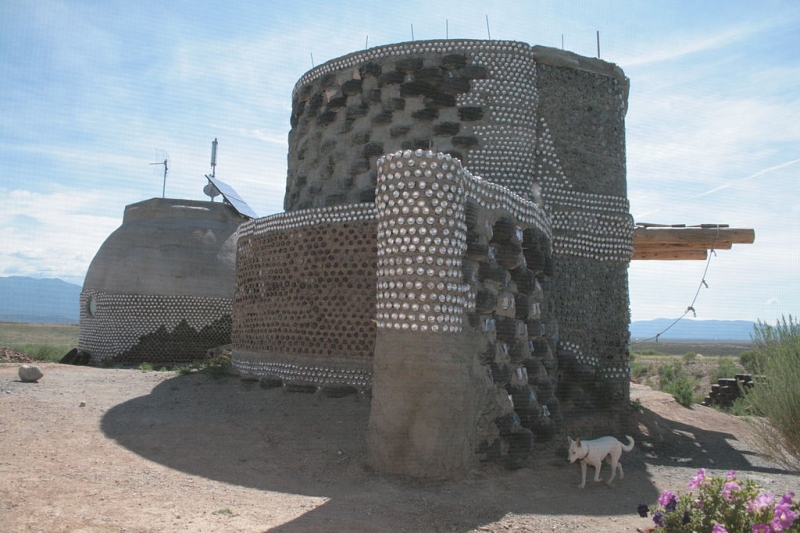
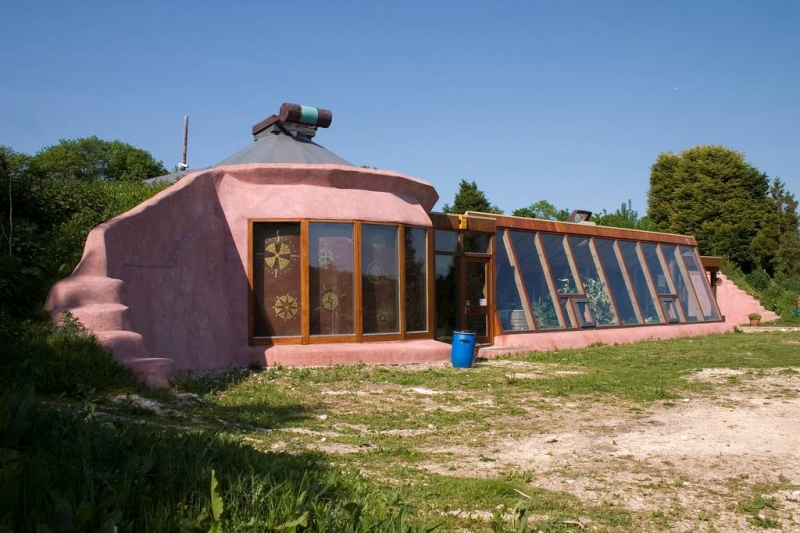

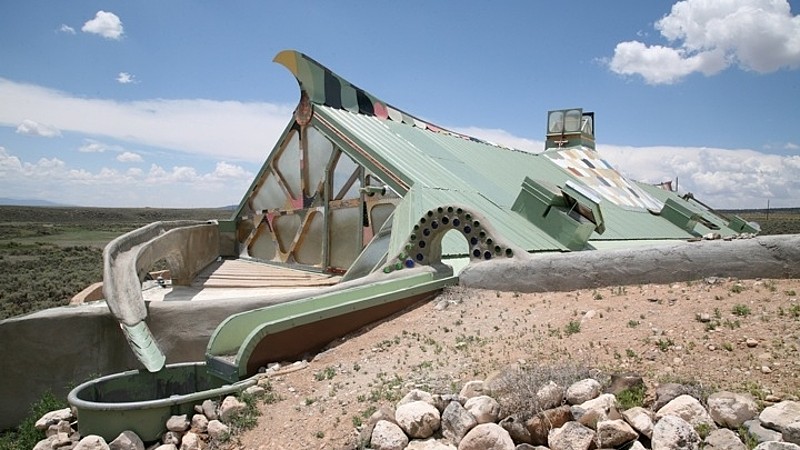
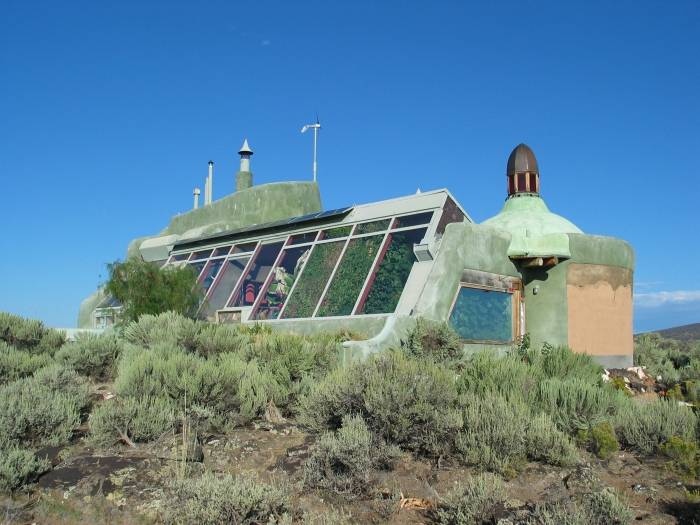
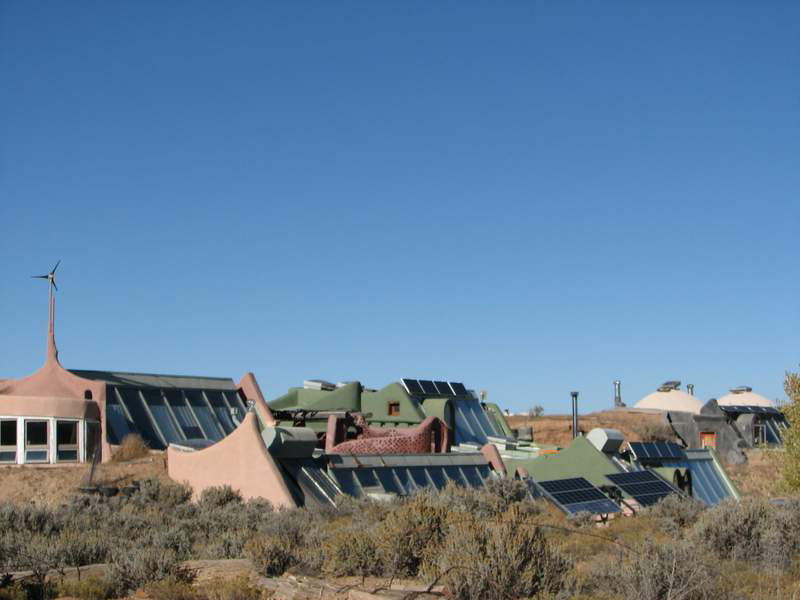

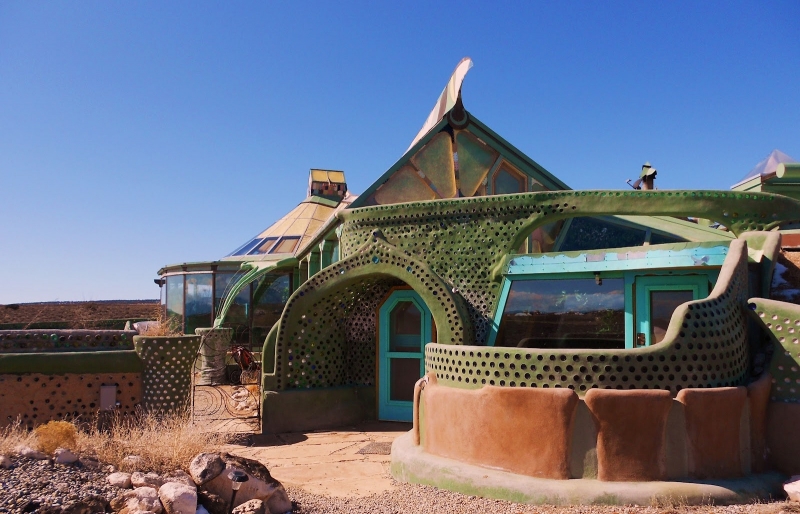
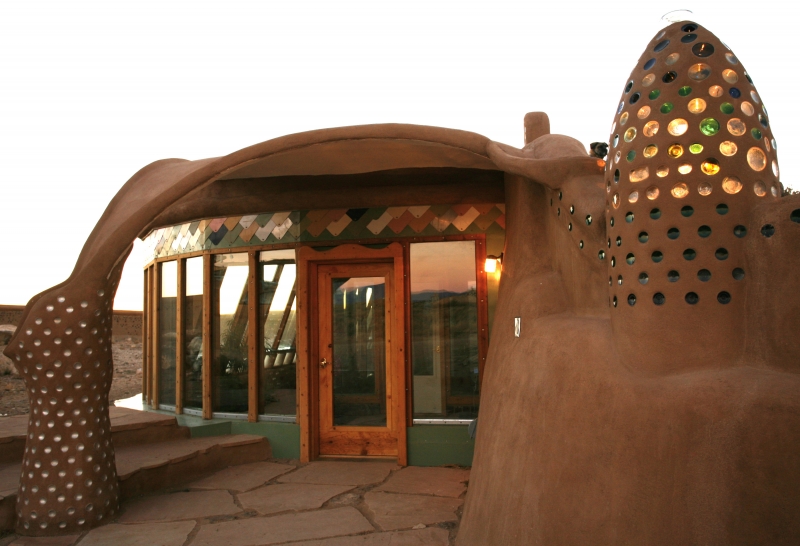
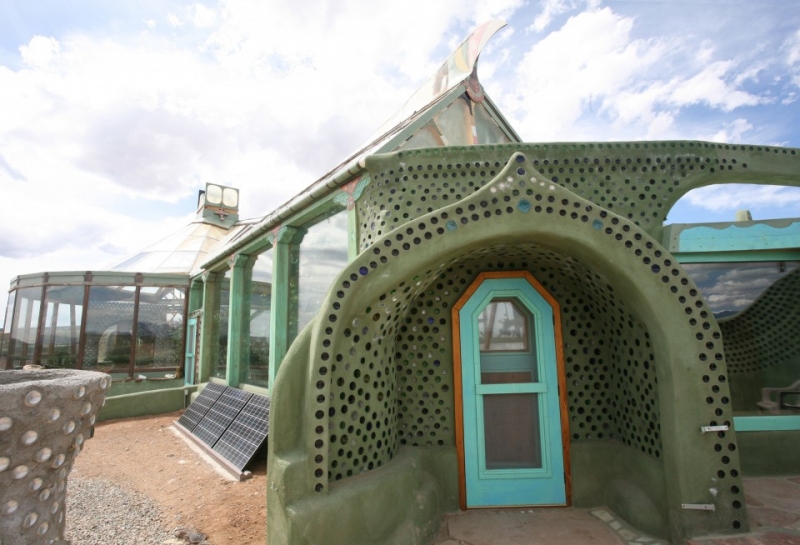
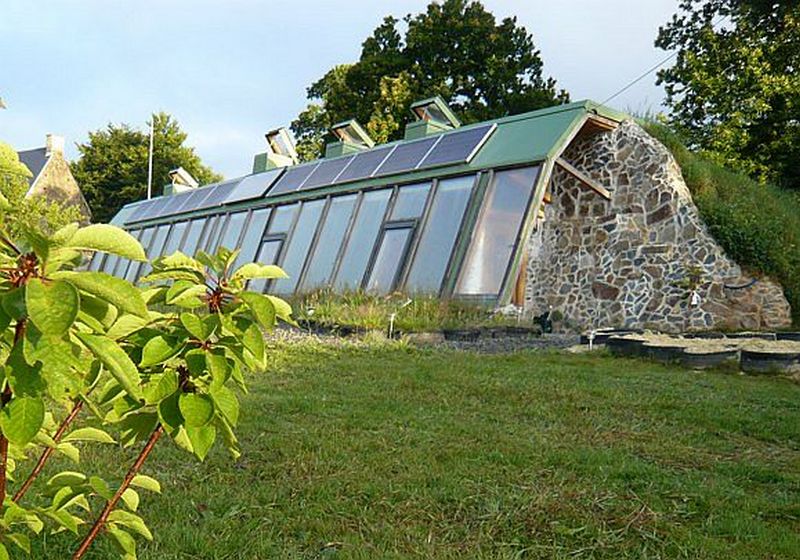
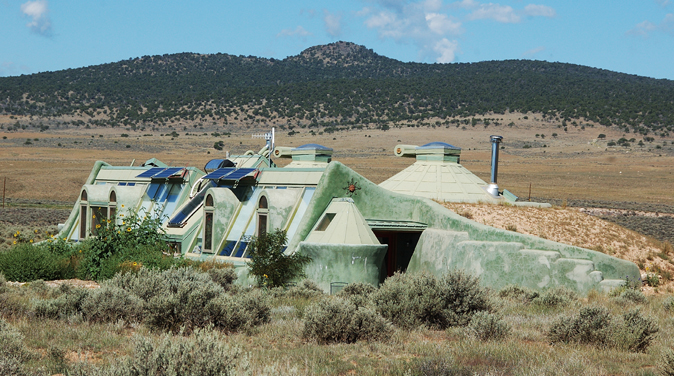
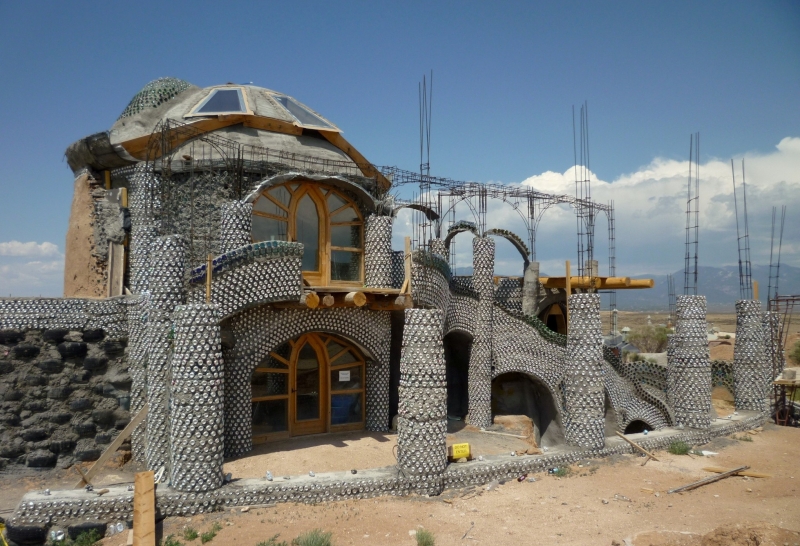
Rainwater Harvesting and Filtration for Self-Reliant Living
Clean water is life for off-grid households. This plan shows how Earthship homes capture every raindrop, store it safely, and deliver drinkable water year-round.
Rooftop Catchment and Gutter Design
A metal or membrane roof funnels rainfall into oversized half-round gutters. Leaf guards and mesh screens stop twigs before they enter pipes. Downspouts slope gently to buried cisterns, using gravity instead of pumps.
First-Flush Diverters
The opening minutes of each storm carry dust and bird droppings. A simple ball-valve jar fills first, then seals itself when full. Only cleaner water continues to storage. Your maintenance routine becomes quick and predictable.
Layered Filtration Chain
Sediment cartridges remove grit. Activated carbon blocks absorb chemicals and improve taste. A UV lamp sits last in line, zapping microbes without chlorine. Clear tubing lets you verify flow and spot issues fast.
Greywater Gardening Loops
After showers and hand-washing, lightly used water drips through indoor planter beds. Plant roots and beneficial bacteria strip remaining nutrients. The polished outflow irrigates exterior herb spirals. You close the cycle and enrich soil.
Maintenance and Quality Checks
Earthship homes keep essential tools handy, including test strips for pH, handheld turbidity meters, spare O-rings, and filter spanners. Monthly inspections clear screens and log water clarity. Annual cistern scrubs stop algae blooms, ensuring every glass you pour stays crisp and safe.
Earthship homes prove that smart design can meet heat and water needs with little tech and lots of creativity. Four solid strategies, passive solar heating, robust insulation, thoughtful shading, and integrated rainwater systems, work together to create resilient, comfortable living spaces that honor the planet.
Clean Energy Independence With Solar And Wind
Earthship homes secure energy freedom with roof photovoltaic arrays and compact wind turbines. Combined, they form a resilient microgrid that powers lights, water pumps, and appliances continuously.
Panel Placement And Tilt Angles
Start by mapping roof space that gets five or more sun hours in winter. Mount panels facing true south if you’re in the Northern Hemisphere, angling them near your site latitude for year-round output. Adjustable racks let you tweak tilt twice a year to chase seasonal sun. Keep rows clear of vent stacks and skylights to limit shade. A combiner box close to the array cuts line losses and simplifies maintenance checks.
Battery Storage And Inverters
Deep-cycle lithium batteries absorb daytime surplus and discharge through the night. A modern inverter/charger keeps voltage stable and flips to grid backup if you want redundancy. Stackable modules scale as your needs grow. Mount batteries in an insulated nook that stays between 10 °C and 25 °C for long life. Add a battery management system with Bluetooth monitoring so you’re always aware of state of charge and cycle counts.
Turbine Siting And Tower Options
Small turbines need clear, laminar wind. Raise the rotor at least ten metres above nearby obstructions or two times the height of the tallest tree within a thirty-metre radius. Guyed lattice towers cost less than monopoles and fold down for service. Use vibration-damping pads at anchor points to protect tire walls from resonance. A diversion load dumps excess power during storms, saving blades and batteries from over-speed events.
Smart Micro-Grid Management
Hybrid charge controllers merge solar and wind inputs into one bus and balance harvest between sources. Set priority loads—like refrigeration and water pumping—to draw first. Less critical circuits shut off automatically when battery voltage drops below a programmable threshold. Cloud dashboards display live production and consumption, helping you shift heavy tasks to sunny or breezy periods. Firmware updates keep the system aligned with evolving appliance efficiency standards.
Thermal Mass Walls For Superior Insulation
Thick thermal mass walls are the secret to the quiet, steady climate inside every Earthship home. Tires, glass bottles, and earthen plasters cooperate to store heat.
Tire Rammed Earth Cores
Used car tires stack like giant bricks. Each one is packed with moist soil until it bulges against the rim. The result weighs up to 140 kg, giving the wall serious inertia. Tight stacking in a running bond pattern avoids vertical seams.
Rebar pins every third course lock rings together. Once buried on the rear side of the house, this mass tempers indoor swings, holding warmth in winter and coolness in summer.
Bottle-Brick Light Walls
Clear and colored bottles become structural bricks when set throat-to-throat inside a sand-cement mortar matrix. The cavities trap air that slows heat transfer, while the glass admits dappled daylight.
These walls work best on interior partitions where they gain or lose heat slowly from both faces. Bottle bricks cost nothing beyond mortar and cutting discs, and they divert waste from local recycling streams. They also create mosaic patterns that personalize each build.
Earthen And Lime Plasters
A three-coat earthen plaster covers tire faces, sealing gaps and adding breathable insulation. Clay, sand, and chopped straw form the base coat. A finer brown coat evens texture. The finish layer might blend lime putty for extra hardness and mold resistance.
Lime cures slowly by absorbing CO₂, locking carbon into the wall. These natural skins flex with temperature changes, so they resist hairline cracking better than cement stucco.
Alternative Mass Materials
If tires aren’t plentiful, builders swap in earthbags, insulated concrete forms filled with scoria, or compressed stabilized earth blocks. Each option maintains density while adapting to local supply.
Earthbags use woven polypropylene tubes filled with soil; they stack quickly and cure into rock-solid arches. Scoria cores add insulation value thanks to trapped volcanic air pockets. Stabilized blocks press local dirt with a hint of cement, giving you uniform units that lay like brick.
Conclusion
Earthship homes prove that discarded materials can become durable shelters that slash construction waste and carbon output. Their passive solar design, thermal-mass walls, and off-grid power cut monthly energy costs to almost zero.
Water harvesting and greywater loops keep households self-reliant even when utilities fail. Dense tire walls shrug off storms and wild temperature swings, so maintenance stays minimal. Choosing this building style lets your family live comfortably while shrinking its footprint and future bills.
If you liked these, you will also like viewing these green and sustainable homes.

